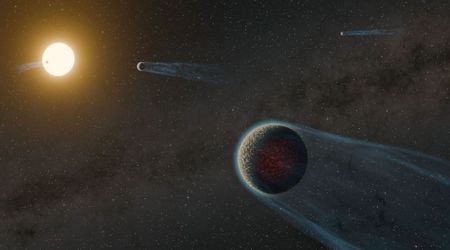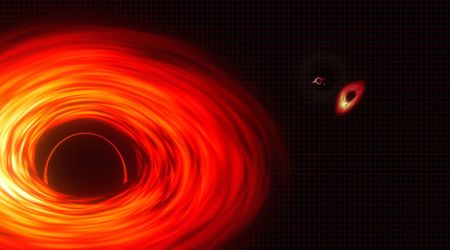Over 9,000 miles of ancient riverbeds reveal Mars was wetter than we thought

New research unveiled at the Royal Astronomical Society's National Astronomy Meeting 2025 in Durham suggests Mars may have harbored significantly more water than previously estimated. A study led by PhD student Adam Losekoot of the Open University, and funded by the UK Space Agency, has identified over 9320.5 miles of ancient riverbeds across the Martian surface, according to the Royal Astronomical Society.

The groundbreaking discovery centers on "fluvial sinous ridges," also known as inverted channels, found predominantly within Noachis Terra — a less-explored region in Mars' southern highlands. These geological formations are believed to be the hardened remnants of river sediment, exposed over millions of years as the softer surrounding terrain eroded away. The widespread presence of these ridges implies that flowing water was once a dominant feature across vast stretches of the planet, with rainfall being the most probable source.

These findings challenge the prevailing scientific view of ancient Mars as a predominantly cold and arid world. Instead, newfound data suggest that surface water in Noachis Terra might have been stable for extended periods, particularly during the Noachian-Hesperian transition approximately 3.7 billion years ago — a crucial era of planetary climatic and geological upheaval. While previous studies on Martian water relied heavily on the analysis of valley networks, this research pivots to fluvial sinuous ridges as a compelling source of evidence. Losekoot emphasized the significance of studying Noachis Terra, describing it as a "time capsule" that has remained largely undisturbed for billions of years, offering unparalleled insights into fundamental geological processes.

Losekoot and his team meticulously mapped the extent and characteristics of these ridge systems using data from three orbital instruments: the Context Camera (CTX), the Mars Orbiter Laser Altimeter (MOLA), and the High Resolution Imaging Science Experiment (HiRISE). Their analysis revealed features ranging from isolated segments to interconnected systems spanning hundreds of miles and several feet from the surrounding landscape.
The broad distribution and interconnected nature of these ridges strongly indicate that they were formed over a geologically significant timeframe under stable surface conditions, implying sustained precipitation. "Our work is a new piece of evidence that suggests that Mars was once a much more complex and active planet than it is now, which is such an exciting thing to be involved in," Losekoot stated, emphasizing the excitement surrounding these revelations. The extensive and interconnected nature of these ancient river systems suggests a prolonged period of warm, wet conditions in Noachis Terra, directly challenging theories that attribute martian water features to short, occasional warming events from ice-sheet meltwater.
As scientists at the National Astronomy Meeting 2025 consider new evidence of a wetter ancient Mars, attention also turns to the ongoing discoveries made by NASA's Curiosity Rover. The rover is currently examining a peculiar rock formation that some observers have likened to a "dinosaur footprint," underscoring the Red Planet's capacity for surprising geological features that continuously challenge scientific understanding.

The Curiosity team recently executed a precise maneuver, positioning the rover about 35 feet from a 3-foot-high ridge. This significant formation marks the eastern edge of an area formally named “Volcán Peña Blanca.” While initial orbital imagery hinted at its unique nature, detailed ground-level photographs from Curiosity propelled it to the forefront of the mission's investigative priorities. By analyzing these structures, researchers hope to determine whether the rocks originated from ancient dunes, rivers, or lakes, thereby contributing to the broader understanding of Mars' hydrological past.









